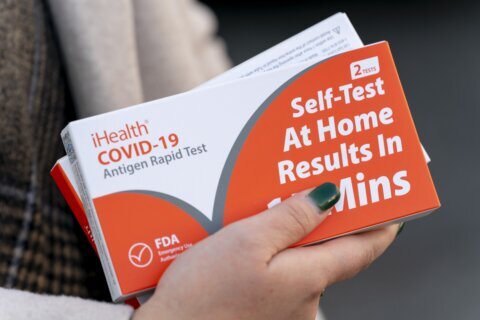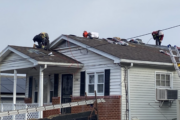Surviving Covid-19 is hard enough for those who get severely ill from the disease, but returning to normal is a struggle, too, according to new research that found survivors were likely to face health and financial hardships even months later.
A team of scientists led by Dr. Vineet Chopra of the University of Michigan Health System looked at 488 Covid-19 patients treated and released from hospitals in Michigan. They surveyed them about two months after their release, between March 16 and July 1.
A third of the survivors reported ongoing health issues, such as cough, new or worsening conditions and persistent loss of taste or smell, the researchers reported this week in the journal Annals of Internal Medicine.
Nearly half said they were “emotionally affected” by their illness and a small number, 28, sought mental health care after discharge.
Another 36% reported “at least a mild financial impact from their hospitalization.” Of those employed before their illness, 40% said they either lost their job or were too sick to return to work. Just over a quarter of those who returned to work reported reduced hours or modified responsibilities.
“For most patients who survived, ongoing morbidity, including the inability to return to normal activities, physical and emotional symptoms, and financial loss, was common,” Chopra’s team wrote.
“These data confirm that the toll of Covid-19 extends well beyond hospitalization,” the study concluded.
The study had limitations. The survey only covered 488 out of more than 1,600 patients whose records were originally tracked. A third of those 1,600 patients died, the researchers reported.
CDC data: Hospitalization rates among Blacks and Latinos about 4 times higher than Whites
Covid-19 hospitalization rates are significantly higher among the Black, Latino, and Alaska Native or Native American populations in the United States compared with Asian and White people, new data from the US Centers for Disease Control and Prevention’s weekly Covid-19 surveillance report show.
The data shows that, between March 1 and November 7, the hospitalization rate among the Hispanic or Latino population was 444.6 per 100,000 people. The hospitalization rate among Alaska Natives or Native Americans was 430.9 per 100,000. Among the Black population, it was 412.2 per 100,000.
The hospitalization rate among Asian or Pacific Islanders and Whites were 132.5 and 106.2 per 100,000, respectively, according to the data, which was updated on Friday.
“When examining overall age-adjusted rates by race and ethnicity, the rate for Hispanic or Latino persons was approximately 4.2 times the rate among non-Hispanic White persons,” the CDC report said. “Rates for non-Hispanic American Indian or Alaska Native persons and non-Hispanic Black persons were approximately 4.1 and 3.9 times the rate among non-Hispanic White persons, respectively.”
The data comes from a surveillance system consisting of 250 acute care hospitals in 14 states, the CDC says.
Since the end of September, overall weekly hospitalizations rates in the United States have increased, driven primarily by a rise in rates among adults ages 50 and older, according to the CDC.
Additionally, weekly hospitalization rates among children have had a two-week sustained increase from October 24 to November 7, the CDC said.







